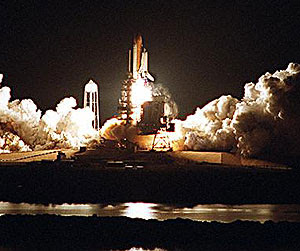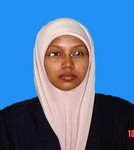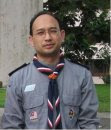The Nobel Prize in Physics has been awarded to 183 individuals since 1901.No one is from Malaysia.... Hopefully one day there is a malaysian win the nobel prize especially in Physics. 2008 is from Asia-Japanese...
2008 - Yoichiro Nambu, Makoto Kobayashi, Toshihide Maskawa
2007 - Albert Fert, Peter Grünberg
2006 - John C. Mather, George F. Smoot
2005 - Roy J. Glauber, John L. Hall, Theodor W. Hänsch
2004 - David J. Gross, H. David Politzer, Frank Wilczek
2003 - Alexei A. Abrikosov, Vitaly L. Ginzburg, Anthony J. Leggett
2002 - Raymond Davis Jr., Masatoshi Koshiba, Riccardo Giacconi
2001 - Eric A. Cornell, Wolfgang Ketterle, Carl E. Wieman
2000 - Zhores I. Alferov, Herbert Kroemer, Jack S. Kilby
1999 - Gerardus 't Hooft, Martinus J.G. Veltman
1998 - Robert B. Laughlin, Horst L. Störmer, Daniel C. Tsui
1997 - Steven Chu, Claude Cohen-Tannoudji, William D. Phillips
1996 - David M. Lee, Douglas D. Osheroff, Robert C. Richardson
1995 - Martin L. Perl, Frederick Reines
1994 - Bertram N. Brockhouse, Clifford G. Shull
1993 - Russell A. Hulse, Joseph H. Taylor Jr.
1992 - Georges Charpak
1991 - Pierre-Gilles de Gennes
1990 - Jerome I. Friedman, Henry W. Kendall, Richard E. Taylor
1989 - Norman F. Ramsey, Hans G. Dehmelt, Wolfgang Paul
1988 - Leon M. Lederman, Melvin Schwartz, Jack Steinberger
1987 - J. Georg Bednorz, K. Alex Müller
1986 - Ernst Ruska, Gerd Binnig, Heinrich Rohrer
1985 - Klaus von Klitzing
1984 - Carlo Rubbia, Simon van der Meer
1983 - Subramanyan Chandrasekhar, William A. Fowler
1982 - Kenneth G. Wilson
1981 - Nicolaas Bloembergen, Arthur L. Schawlow, Kai M. Siegbahn
1980 - James Cronin, Val Fitch
1979 - Sheldon Glashow, Abdus Salam, Steven Weinberg
1978 - Pyotr Kapitsa, Arno Penzias, Robert Woodrow Wilson
1977 - Philip W. Anderson, Sir Nevill F. Mott, John H. van Vleck
1976 - Burton Richter, Samuel C.C. Ting
1975 - Aage N. Bohr, Ben R. Mottelson, James Rainwater
1974 - Martin Ryle, Antony Hewish
1973 - Leo Esaki, Ivar Giaever, Brian D. Josephson
1972 - John Bardeen, Leon N. Cooper, Robert Schrieffer
1971 - Dennis Gabor
1970 - Hannes Alfvén, Louis Néel
1969 - Murray Gell-Mann
1968 - Luis Alvarez
1967 - Hans Bethe
1966 - Alfred Kastler
1965 - Sin-Itiro Tomonaga, Julian Schwinger, Richard P. Feynman
1964 - Charles H. Townes, Nicolay G. Basov, Aleksandr M. Prokhorov
1963 - Eugene Wigner, Maria Goeppert-Mayer, J. Hans D. Jensen
1962 - Lev Landau
1961 - Robert Hofstadter, Rudolf Mössbauer
1960 - Donald A. Glaser
1959 - Emilio Segrè, Owen Chamberlain
1958 - Pavel A. Cherenkov, Il´ja M. Frank, Igor Y. Tamm
1957 - Chen Ning Yang, Tsung-Dao Lee
1956 - William B. Shockley, John Bardeen, Walter H. Brattain
1955 - Willis E. Lamb, Polykarp Kusch
1954 - Max Born, Walther Bothe
1953 - Frits Zernike
1952 - Felix Bloch, E. M. Purcell
1951 - John Cockcroft, Ernest T.S. Walton
1950 - Cecil Powell
1949 - Hideki Yukawa
1948 - Patrick M.S. Blackett
1947 - Edward V. Appleton
1946 - Percy W. Bridgman
1945 - Wolfgang Pauli
1944 - Isidor Isaac Rabi
1943 - Otto Stern
1942 - The prize money was with 1/3 allocated to the Main Fund and with 2/3 to the Special Fund of this prize section
1941 - The prize money was with 1/3 allocated to the Main Fund and with 2/3 to the Special Fund of this prize section
1940 - The prize money was with 1/3 allocated to the Main Fund and with 2/3 to the Special Fund of this prize section
1939 - Ernest Lawrence
1938 - Enrico Fermi
1937 - Clinton Davisson, George Paget Thomson
1936 - Victor F. Hess, Carl D. Anderson
1935 - James Chadwick
1934 - The prize money was with 1/3 allocated to the Main Fund and with 2/3 to the Special Fund of this prize section
1933 - Erwin Schrödinger, Paul A.M. Dirac
1932 - Werner Heisenberg
1931 - The prize money was allocated to the Special Fund of this prize section
1930 - Sir Venkata Raman
1929 - Louis de Broglie
1928 - Owen Willans Richardson
1927 - Arthur H. Compton, C.T.R. Wilson
1926 - Jean Baptiste Perrin
1925 - James Franck, Gustav Hertz
1924 - Manne Siegbahn
1923 - Robert A. Millikan
1922 - Niels Bohr
1921 - Albert Einstein
1920 - Charles Edouard Guillaume
1919 - Johannes Stark
1918 - Max Planck
1917 - Charles Glover Barkla
1916 - The prize money was allocated to the Special Fund of this prize section
1915 - William Bragg, Lawrence Bragg
1914 - Max von Laue
1913 - Heike Kamerlingh Onnes
1912 - Gustaf Dalén
1911 - Wilhelm Wien
1910 - Johannes Diderik van der Waals
1909 - Guglielmo Marconi, Ferdinand Braun
1908 - Gabriel Lippmann
1907 - Albert A. Michelson
1906 - J.J. Thomson
1905 - Philipp Lenard
1904 - Lord Rayleigh
1903 - Henri Becquerel, Pierre Curie, Marie Curie
1902 - Hendrik A. Lorentz, Pieter Zeeman
1901 - Wilhelm Conrad Röntgen
Read more...

































